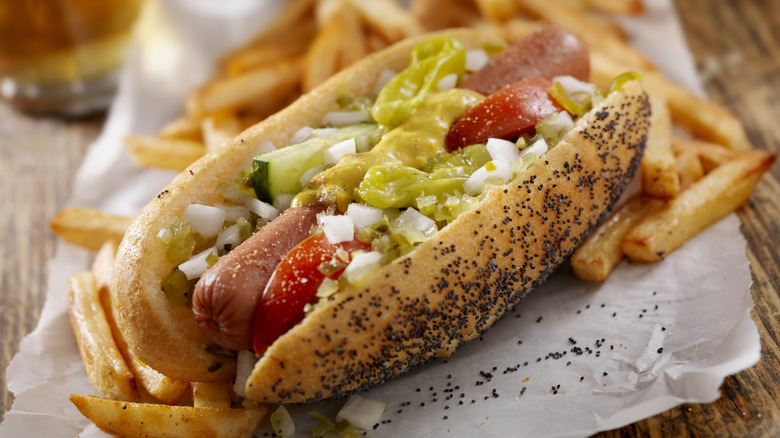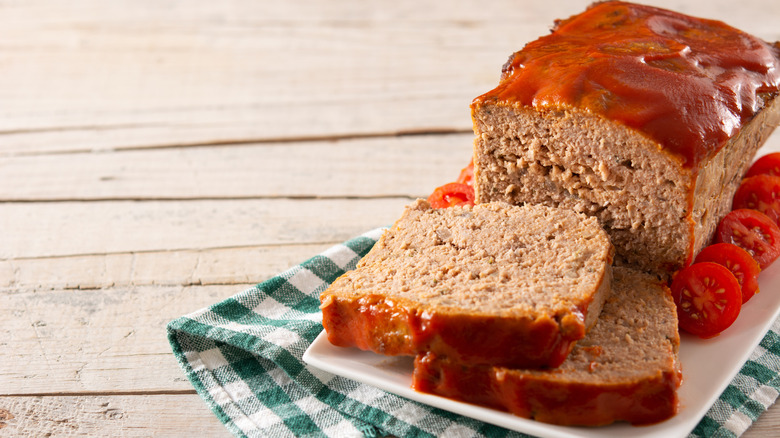How 5 Cent Chicago Dogs Became A Staple In The Great Depression
Among America's expansive regional hot dog styles, few come steeped in lore quite like the Chicago dog. Enjoyed at baseball games for well over a century and served out of long-running iconic restaurants, it's a dish deeply embedded in the fabric of the city. Tradition even runs the food's assembly: Vienna beef, mustard, several pickled vegetables, onions, tomatoes, and celery salt must go on atop a poppy bun, and to be an authentic Chicago hot dog, they must be added in a specific order.
Such respected enjoyment took hold over decades, with even the Great Depression shaping this hot dog style. Amidst this era of economic hardship from 1929 to 1939, the food was available for only a nickel (around $1 in modern currency). Even through such times, the composition remained remarkably similar. Vienna Beef still comprised the central protein, paired with the same recognizable toppings of sport peppers, pickles, relish, and other vegetables.
The food emerged as a Great Depression staple by way of Chicago's already existing culinary culture. The city established itself as a central meatpacking hub in the 19th century, with German and Central European immigrants importing sausage traditions. Subsequently, manufacturing such a cheap yet delicious meat source was already well-established by the 1920s. Meanwhile, the pickles, relish, and vegetables came about from Southern European immigrants, who won over customers with flavorful combinations. Factor in the convenience of assembling and serving hot dogs out of street carts, and such a filling food is ideal for budget enjoyment.
Several Great Depression staples still enjoy popularity
In parallel to Depression-era hot dogs in Chicago, the New York-style hot dog (also the first ever) was also priced at a nickel per dish during the same period. German immigrant Charles Feltman is credited with creating the recipe, and it was popularized by the still-enduring Nathan's Famous out of Coney Island. And amidst these tough times, many other American classics worked their way into commonly enjoyed foods — no sausages involved.
For instance, the humble meatloaf proliferated during the Depression. Relying on cheap beef cuts, sausage, and satiating binders like breadcrumbs and cereals, the dish savvily yielded a meal for a whole family. Back then, even the seasonings mirrored a modern easy meatloaf recipe, with ketchup serving as a common condiment. Elsewhere in the U.S., the all-American burger also adapted to the hardships of the Great Depression. An enterprising Route 66 restaurant owner in Oklahoma started stuffing patties with onions to save costs, creating a new sweet and beefy classic still enjoyed today. And the desserts from the time still circulate, too — although everyone forgot about the creamy buttermilk pie, the custardy water pie has once again experienced a resurgence. So although the Great Depression occurred nearly a century prior, the era's culinary innovations continue to satisfy.


